Mercedes Frame Alignment: Protecting Resale Value and Brand Integrity
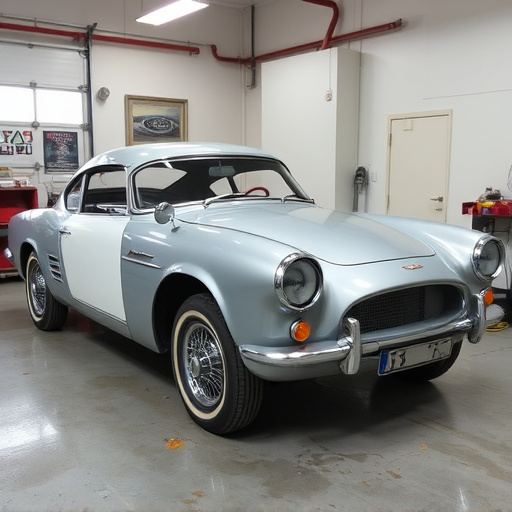
Mercedes frame alignment is vital for maintaining structural integrity, enhancing driving dynamics,…….
Welcome to an in-depth exploration of a critical aspect of automotive engineering and design—Mercedes Frame Alignment. This article aims to guide you through the intricate world of vehicle frame construction, focusing specifically on the iconic Mercedes-Benz brand and its alignment strategies. We will uncover the history, global impact, technological innovations, regulatory landscape, and future prospects that shape this essential automotive concept. By the end, readers will gain a profound understanding of why Mercedes frame alignment is not just a technical detail but a defining factor in the performance, safety, and luxury associated with Mercedes-Benz vehicles.
Definition: Mercedes frame alignment refers to the precise engineering and assembly process that determines the structural integrity and spatial accuracy of a Mercedes-Benz vehicle’s frame. It involves the careful arrangement of various components, including the chassis, suspension, and body panels, to ensure optimal performance, handling, and safety.
At its core, the Mercedes frame is a sophisticated piece of mechanical engineering, designed to withstand the forces exerted during driving while providing a comfortable and secure ride. The alignment process begins with the design phase, where engineers utilize advanced computer-aided design (CAD) software to create a digital blueprint. This virtual model ensures accuracy and facilitates stress analysis, enabling engineers to identify potential weaknesses before manufacturing.
Historical Context: The Mercedes-Benz brand has always been synonymous with precision engineering and innovation. Since its inception in the late 19th century, Mercedes has pushed boundaries in automotive technology. The company’s early focus on frame design laid the foundation for its reputation as a leader in vehicle performance and safety. Over time, Mercedes evolved from horse-drawn carriages to pioneering gasoline-powered cars, each model incorporating advancements in frame alignment techniques.
Significance: Mercedes frame alignment plays a pivotal role in several key areas:
Structural Integrity: The frame is the backbone of any vehicle, providing rigidity and support for the entire car body. Proper alignment ensures that the frame can withstand torsion, bending, and shear forces generated during driving, preventing structural failure.
Handling and Safety: Precise alignment contributes to enhanced vehicle dynamics, resulting in improved handling, better cornering capabilities, and increased stability at high speeds. This is crucial for safety, as it enables drivers to maintain control in critical situations.
Comfort and Ride Quality: The suspension system, integral to frame alignment, plays a significant role in ride comfort. Proper alignment ensures that the suspension functions optimally, absorbing road imperfections and reducing body roll, thereby enhancing passenger comfort.
Body Panels and Aesthetics: Precise alignment guarantees that the body panels fit seamlessly together, contributing to the vehicle’s overall aesthetic appeal. This precision is particularly evident in Mercedes’ sleek and stylish designs.
The influence of Mercedes frame alignment extends far beyond Germany’s borders, shaping the automotive industry worldwide. Here’s a global perspective:
Europe: As the birthplace of Mercedes-Benz, Europe has witnessed the evolution of its frame alignment techniques. German engineering excellence has set a high bar for vehicle quality and safety standards across the continent. European regulations, such as those from ECE (European Economic Commission), have driven the need for precise frame alignment to ensure consistent vehicle performance and safety across borders.
North America: The US and Canadian markets represent a significant portion of Mercedes’ global sales. Here, the company has adapted its frame alignment strategies to meet local driving conditions and consumer preferences. For instance, North American models often incorporate additional safety features and enhanced suspension systems, reflecting regional demands.
Asia Pacific: Rapidly growing markets like China and India have influenced Mercedes’ design philosophy. To cater to diverse road conditions and customer expectations, the company has tailored its frame alignment for improved durability and handling in these regions.
Trends Shaping the Future:
Lightweight Materials: The automotive industry is moving towards lightweight materials like aluminum and carbon fiber composites to enhance fuel efficiency and reduce emissions. These materials present both challenges and opportunities for frame alignment, requiring precise engineering to maintain structural integrity while achieving weight savings.
Autonomous Vehicles: As self-driving cars become a reality, the focus shifts from traditional handling dynamics to advanced sensor systems and software. Frame alignment will need to accommodate these changes, ensuring compatibility with new safety and technology requirements.
Electric Vehicle (EV) Revolution: The rise of EVs is transforming the automotive landscape. Mercedes, like other manufacturers, is investing heavily in EV technology, including frame design. Aligning battery packs and electrical components while maintaining efficient weight distribution is a key challenge and opportunity for future Mercedes models.
The economic aspects of Mercedes frame alignment are intricate and multifaceted, impacting both the company’s bottom line and global automotive industry trends.
Market Demand: The global luxury car market, a primary segment for Mercedes, has shown consistent growth. According to data from IHS Markit, the worldwide light vehicle market reached 89.3 million units in 2021, with premium brands like Mercedes-Benz benefiting from increasing consumer demand for high-end vehicles.
Investment Patterns: Mercedes-Benz Group AG invests heavily in research and development (R&D), with a significant portion dedicated to frame alignment and advanced engineering. In 2022, the company allocated €1 billion to R&D, reflecting its commitment to technological advancements, including next-generation frame designs.
Economic Systems and Frame Alignment: The automotive industry is a vital component of global economies, contributing to GDP and employment. Countries with strong automotive sectors, such as Germany, benefit from advanced manufacturing jobs and export revenues. Precise frame alignment techniques contribute to the overall competitiveness of these economic systems by ensuring high-quality vehicles.
Mercedes has been at the forefront of technological advancements in vehicle frame design, constantly pushing boundaries to deliver superior performance and safety.
Advanced Materials: The use of advanced materials like high-strength steels and lightweight composites has revolutionized Mercedes frame alignment. These materials offer improved strength-to-weight ratios, enabling engineers to create lighter yet stronger frames while reducing fuel consumption and emissions.
Computer-Aided Engineering (CAE): CAE tools have become indispensable in the design process. Engineers use software for complex simulations, stress analysis, and optimization, ensuring that virtual prototypes meet real-world performance standards before physical manufacturing begins.
Robotic Assembly: Mercedes has implemented sophisticated robotic systems for frame assembly, enhancing precision and consistency. These robots can perform tasks with micro-second accuracy, minimizing errors and ensuring the highest quality control during production.
Advanced Suspension Systems: The development of active suspension systems, such as Mercedes’ Magic Body Control, is a testament to technological innovation. These systems use sensors and actuators to adapt to road conditions in real time, providing enhanced ride comfort and handling.
The automotive industry operates within a complex web of policies and regulations that shape vehicle design, safety, and environmental standards. Here’s how these frameworks impact Mercedes frame alignment:
Safety Standards: Global safety regulations, such as those set by the UN’s Economic Commission for Europe (UN ECE) and the National Highway Traffic Safety Administration (NHTSA) in the US, dictate minimum performance criteria for vehicles. Mercedes aligns its frame design to meet or exceed these standards, ensuring that its vehicles provide superior safety features and protection.
Emissions Control: Environmental regulations drive the need for lighter vehicle frames, as reduced weight contributes to lower fuel consumption and emissions. Mercedes frame alignment is engineered to balance structural integrity with weight savings, adhering to stringent emission standards.
Regional Variations: Different regions have unique requirements and preferences. For instance, European Union (EU) regulations focus on strict crash test protocols, while US regulations emphasize electronic stability control (ESC). Mercedes tailors its frame alignment strategies to meet these regional variations, ensuring compliance and customer satisfaction.
Despite its numerous advantages, Mercedes frame alignment faces several challenges and criticisms that require careful consideration and innovative solutions.
Cost and Complexity: Advanced frame alignment techniques can increase manufacturing costs and complexity, potentially impacting the final vehicle price. Balancing innovation with affordability is a constant challenge for Mercedes engineers.
Material Supply Chain: Sourcing high-quality materials and components for frame construction can be challenging, especially in regions with limited access to specialized suppliers. Ensuring a reliable supply chain is crucial for consistent production quality.
Regulatory Compliance: Keeping up with evolving safety and environmental regulations is demanding. Mercedes must continuously invest in R&D to stay ahead of these changes, ensuring that its frame alignment strategies remain compliant while delivering on performance and sustainability promises.
Proposed Solutions:
Modular Design: Adopting modular design principles can simplify manufacturing and reduce costs while allowing for greater customization. This approach enables engineers to create scalable frame architectures suitable for various vehicle models and market demands.
Supply Chain Optimization: Building strategic partnerships with suppliers and investing in supply chain management technologies can enhance material availability and reduce lead times. Diversifying supplier bases can also mitigate risks associated with regional disruptions.
Collaborative Regulation: Engaging in industry collaborations and working closely with regulatory bodies can help Mercedes anticipate and shape future regulations, ensuring that its frame alignment innovations align with evolving standards.
Let’s explore a few case studies to gain practical insights into the successful implementation of Mercedes frame alignment:
Case Study 1: Mercedes-Benz S-Class (W222)
The S-Class is a flagship sedan known for its luxury, safety, and cutting-edge technology. The W222 model (2013-2018) showcased advanced frame alignment techniques:
Lightweight Construction: The S-Class employed an aluminum space frame, reducing weight by over 50 kg compared to its predecessor. This weight savings improved fuel efficiency and handling dynamics while maintaining structural integrity.
Active Body Control: Mercedes’ Active Body Control (ABC) system uses micro-airbags and electronic control units to adaptively adjust the vehicle’s body in response to road conditions. This technology, integrated into the frame alignment, enhances ride comfort and stability.
Case Study 2: Mercedes-Benz EQS Electric Sedan
Mercedes’ first fully electric sedan, the EQS, represents a significant leap forward in EV technology, including frame design:
Skateboard Platform: The EQS utilizes a skateboard-style battery pack positioned low and centralized, providing a flat floorplan. This design allows for optimal weight distribution, enhancing handling and range.
Modular Frame: The vehicle’s modular architecture accommodates various battery and drivetrain configurations, offering flexibility in future model development. This approach ensures that the frame alignment is adaptable to evolving EV technology.
Case Study 3: Mercedes-Benz AMG GT R
For high-performance sports cars like the AMG GT R, frame alignment must balance precision with robustness:
High-Strength Steel Frame: The AMG GT R features a roll-cage-inspired frame constructed from high-strength steel, providing exceptional rigidity and safety in high-performance driving conditions.
Precision Suspension Setup: The car’s suspension is meticulously aligned to deliver precise handling and cornering capabilities. Advanced electronics control the suspension, allowing for customizable ride settings.
The future of Mercedes frame alignment is filled with exciting possibilities, driven by technological advancements, changing consumer preferences, and global trends.
Electric Vehicle Dominance: As EVs continue to gain market share, Mercedes will further invest in lightweight frame designs tailored for electric powertrains. The company’s focus on sustainable mobility means more efficient and powerful electric vehicles with enhanced range and performance.
Autonomous Vehicles: Self-driving cars will require advanced sensor systems integrated into the vehicle structure. Frame alignment will need to accommodate these technologies, ensuring seamless integration while maintaining structural integrity.
Digital Design and Manufacturing: The fusion of digital design tools and advanced manufacturing techniques will revolutionize frame development. Virtual simulations and 3D printing can speed up prototyping and allow for more complex geometric designs.
Connected Cars: Mercedes’ future vehicles will likely incorporate enhanced connectivity features, requiring additional structural considerations. Frame alignment will need to accommodate new sensor systems, communication modules, and potential cyber-security measures.
Mercedes frame alignment is more than just a technical detail; it is a testament to the company’s unwavering commitment to engineering excellence, safety, and innovation. From its historical roots to global impact and future prospects, this aspect of Mercedes-Benz design plays a pivotal role in shaping the automotive industry.
As we look ahead, the continuous evolution of frame alignment techniques will underpin the performance, safety, and sustainability of Mercedes-Benz vehicles. By embracing technological advancements, navigating regulatory landscapes, and addressing challenges, Mercedes sets the standard for premium automobiles, ensuring its place at the forefront of the global automotive market.
Q: How does frame alignment affect a vehicle’s fuel efficiency?
A: Precise frame alignment contributes to optimal weight distribution and efficient suspension operation. These factors can lead to improved fuel economy by minimizing rolling resistance and enhancing overall vehicle performance.
Q: What is the role of CAD software in Mercedes frame design?
A: Computer-Aided Design (CAD) software enables engineers to create digital models of vehicle frames, perform virtual simulations, and analyze stress distribution. This process streamlines design, facilitates rapid prototyping, and ensures accuracy before physical manufacturing.
Q: How do environmental regulations impact frame alignment?
A: Environmental standards, particularly those related to emissions and fuel efficiency, drive the need for lighter vehicle frames. Mercedes aligns its frame design to meet these regulations while maintaining structural integrity, contributing to reduced carbon footprints.
Q: Can you explain the concept of modular frame design?
A: Modular frame design involves creating scalable and reusable architectural components that can be adapted for various vehicle models. This approach simplifies manufacturing, reduces costs, and enhances customization options while ensuring consistent quality.
Q: What are some future trends in electric vehicle frame alignment?
A: The EV market’s growth will drive the development of lightweight, efficient frames tailored to electric powertrains. Advanced materials, such as carbon fiber composites, will play a significant role. Additionally, integrating battery packs and electronic components seamlessly into the frame structure will be crucial for future electric vehicles.

Mercedes frame alignment is vital for maintaining structural integrity, enhancing driving dynamics,…….

Mercedes frame alignment technology ensures precise camera and sensor placement within a vehicle…….

Mercedes frame alignment is a global protocol ensuring vehicle safety and structural integrity by co…….

Mercedes frame alignment is vital for vehicle control and stability, impacting performance, safety,…….
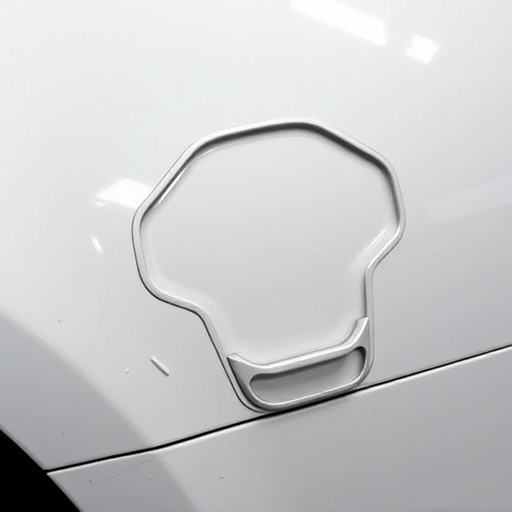
Mercedes frame alignment is a specialized process that restores and maintains the structural integri…….
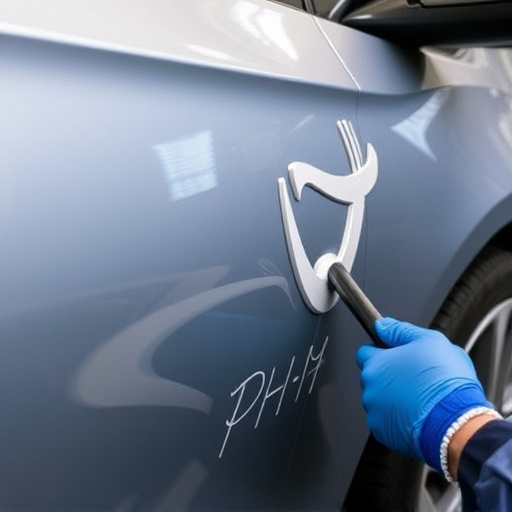
Mercedes frame alignment is crucial for post-accident or repair safety, ensuring airbag deployment a…….
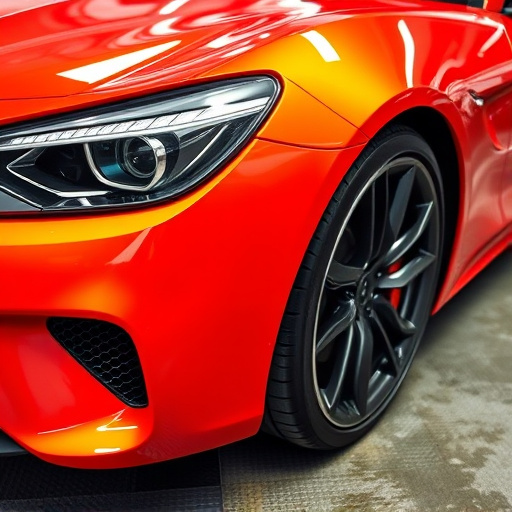
Mercedes frame alignment is crucial for vehicle safety and performance. Regular maintenance prevents…….
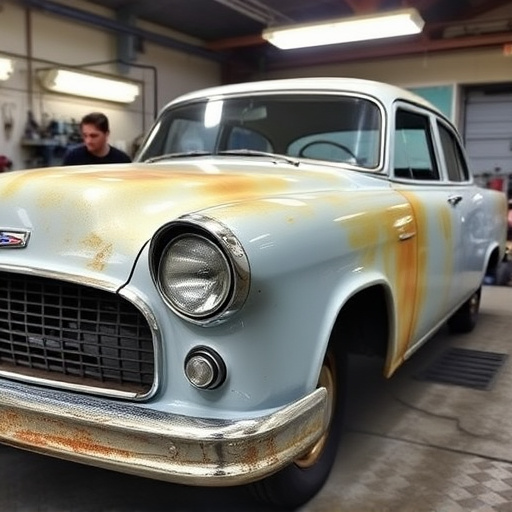
Mercedes frame alignment is crucial for vehicle safety and reliability. It ensures correct positioni…….
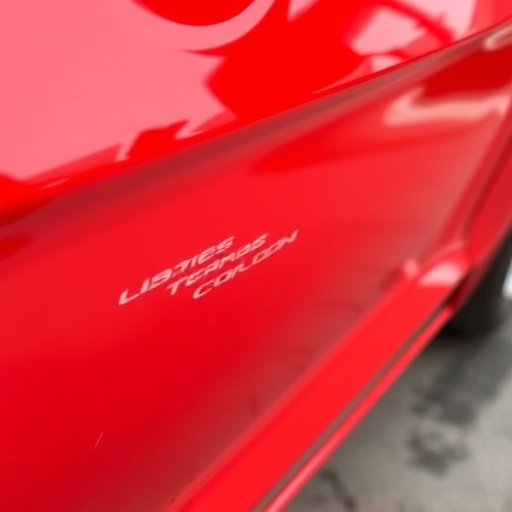
Mercedes frame alignment is essential after side impacts or suspension damage to maintain structural…….
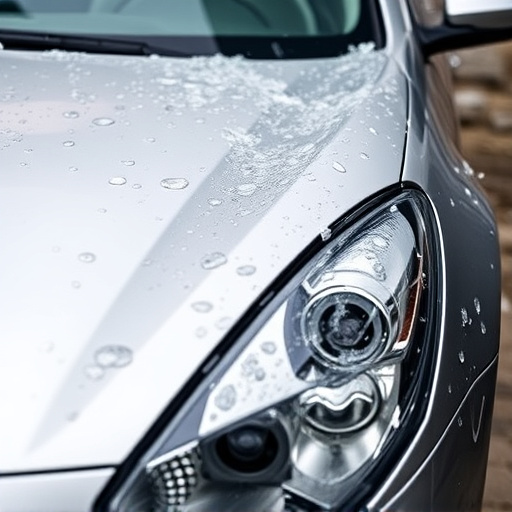
Mercedes frame alignment is a meticulous process crucial for maintaining the structural integrity an…….